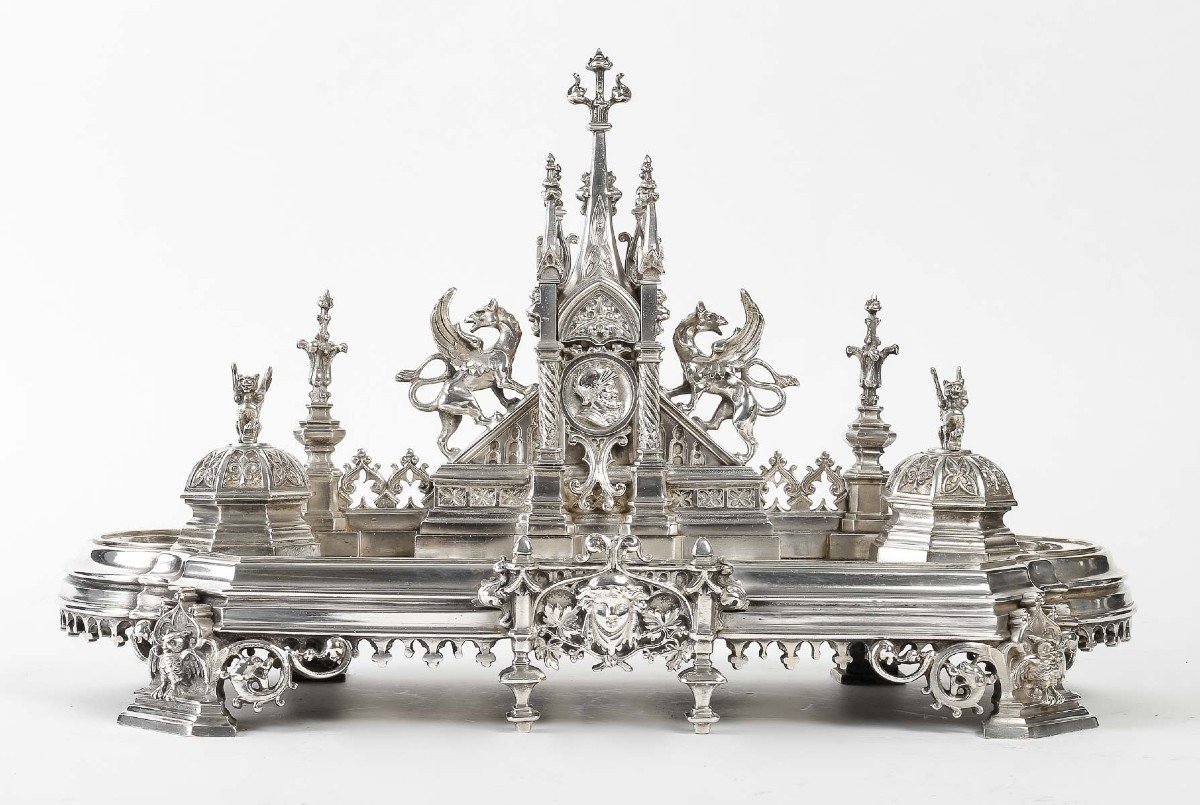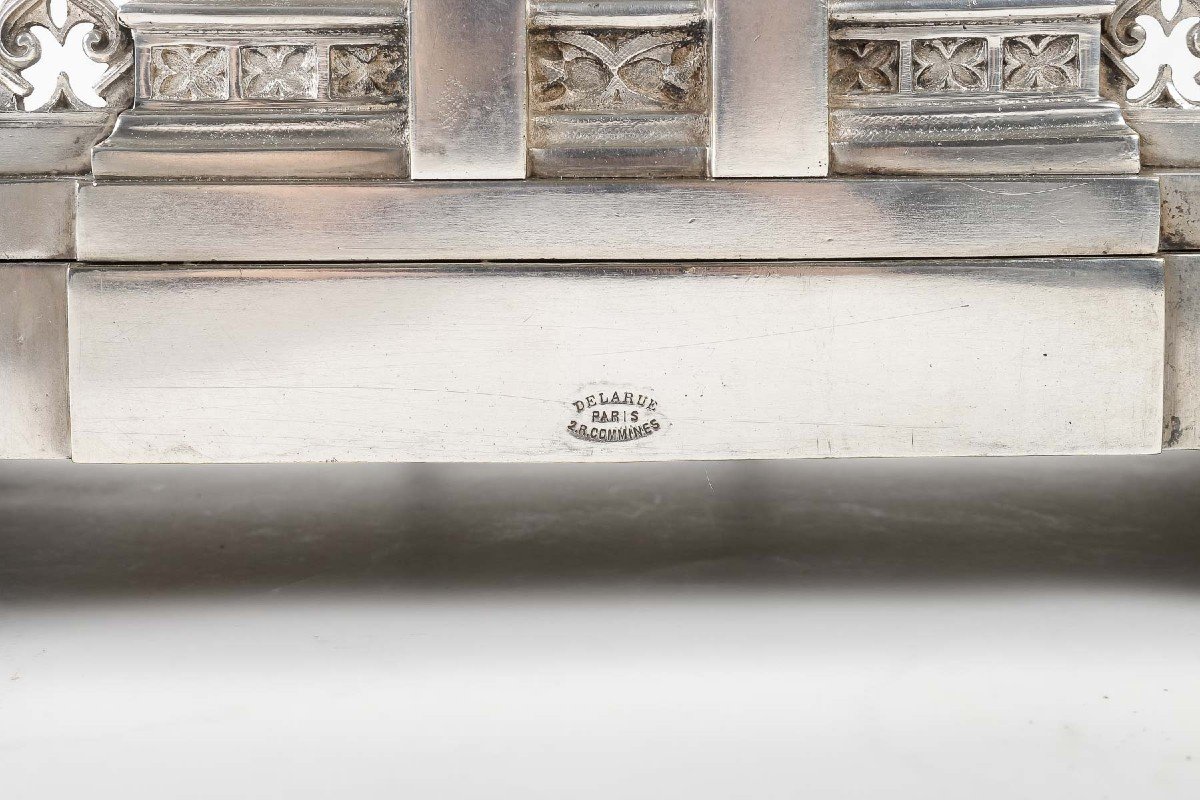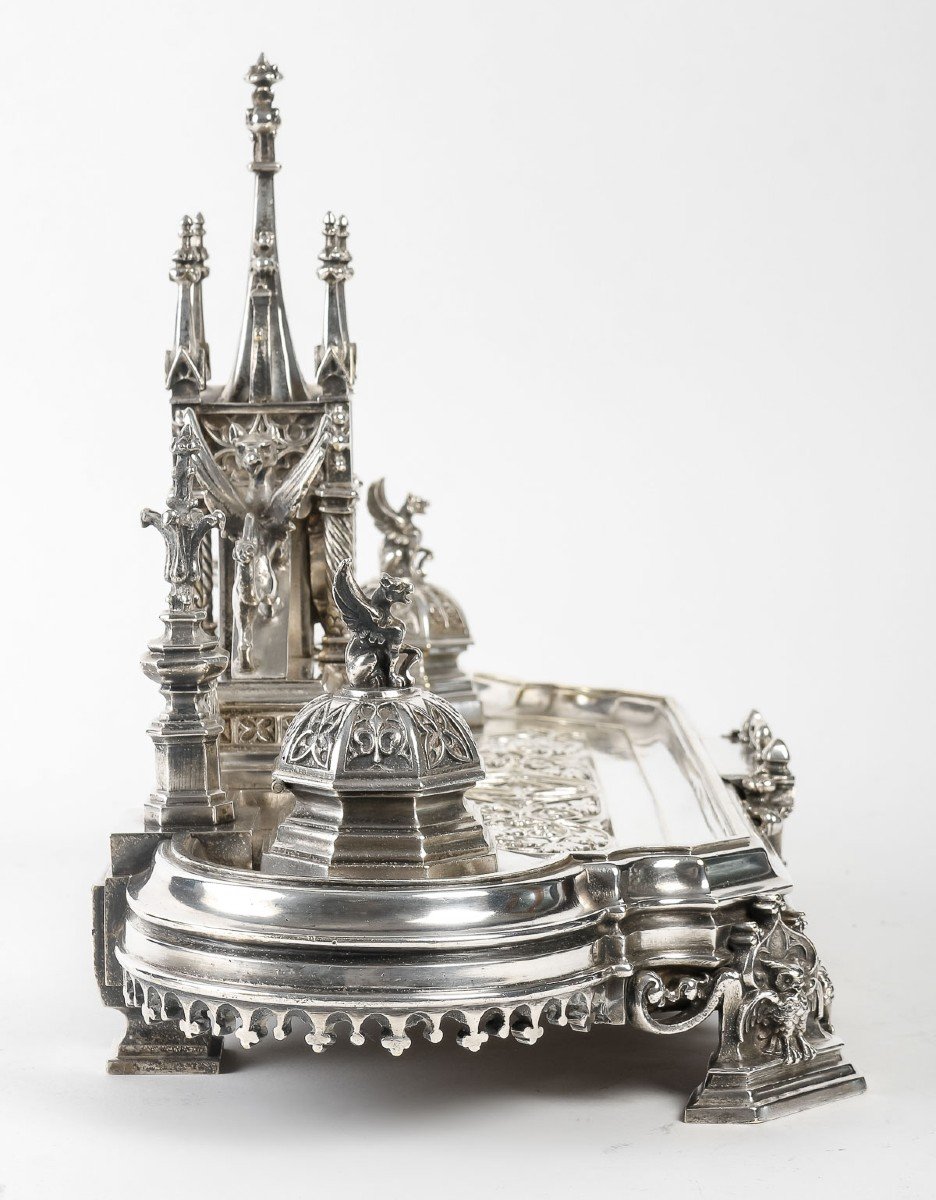"Delarue, In Paris - Neo-gothic Writing Case In Silvered Bronze With Griffons. Circa 1880"
DELARUE Ferdinand, Manufacturer of Art Bronzes in Paris (1878-1908) - Singular neo-Gothic writing case in oblong shape with projections entirely made of silvered bronze. Scalloped with trefoil patterned lace punctuated with plant scrolls animated by chimerical dog heads, its molded base is adorned on the front with small pinnacles flanking a flowered arcade brightened within leafy branches tied with a feminine mask. Embellished with a very finely chiseled panel on a matted background of geometric motifs (rosette, quatrefoil, trisceles, floreted lobes) intertwined with foliage scrolls, its ample terrace-top offers two octagonal receptacles, one used as an inkwell, the 'other hourglass. Faceted with quarte-leaves alternating with fleurons, their hinged lids are emblazoned with heraldic lions. At the height of the backsplash, abutted by a balustrade, stands an unusual aedicula - miniaturized Cathedral, Chapel or Oratory - richly decorated with architectural motifs (columns, lanceolate fenestration, gable, pinnacles) and ornamental motifs (skulls, leafy rosettes, hooks, florets) gothicizing. Stamped with a central medallion with the bust of a valiant Knight, this small monument with its picturesque silhouette boasts two fabulous creatures - Griffons -, haughtily perched on the slope of its flying buttresses.Drawing on the medievalist imagination of the 19th century, this entire composition of great formal verve stands on four straight legs, two of which accommodate, under the canopy of a trefoiled arch, an Owl with outstretched wings.
On the reverse of the Writing Case, the stamp of "DELARUE" (Ferdinand Sébastien), notable manufacturer of art bronzes established on the Parisian square at 2, Rue Commines-, is inscribed on the border, address linked to recognitions, honors (participation in the Universal Exhibitions of 1878, 1889 and 1900 rewarded with a Bronze and then Silver Medal) obtained and commercial successes encountered by this House (1878-1908) offering to its discerning clientele, in addition to "Cartels, pendulums of all styles", models of "bronzes and marbles" "created by numerous contemporary collaborating sculptors", "smoking and office services", "fantasies"... Our Ecritoire is in more than one way the one of the jewels of this House to rediscover.
For fervent fans of dreamlike neo-Gothic flamboyance:
Of an unusual model, this important Writing Book of undeniable originality appropriates with verve complex architectural elements, precious ornamental fantasy, fabulous bestiary, chivalrous character with great deeds,... created, shaped, dreamed, dubbed by the Medieval world from the 12th-14th centuries.
Entirely made of silvered bronze, it is adorned with its oblong protruding shape and its theatrical silhouette, richly crafted with picturesque motifs inspired by the decorative luxuriances of Gothic art. Scalloped with a frieze of small trefoils, its molded, interrupted base on the facade by fine architectural elements centered under an arcade adorned with a smiling female mask among knotted foliage branches, rises on four straight legs. Flanked by plant scrolls profiled with fierce dog heads with half-open mouths (synonymous with Fidelity), the latter are adorned with trefoiled arches housing owls with outstretched wings, emissaries of Wisdom.
Within the receptacle, against the backdrop of a balustrade with lacework abutted by pedestals crowned with flowered ears of corn - constituting the backsplash of the Ecriroire - stands an unusual architectural work. Reporting in turn to the Cathedral, the Chapel and even the Gothic Oratory, this miniaturized building summons the structural and ornamental lexicon characteristic of this constructive and inventive period. Embellished with many gothic motifs (speckles, lanceolate fenestration, ogival arcature centered with a foliage rosette, trefoiled lancet tracery, hooks of foliage, buds and florets), its slender composition (columns, pinnacles cushioned with fleurons, gable) is stamped with a medallion chiseled in fine relief of the bust in profile of a brave knight wearing his helm. Perched on the slope of the flying buttresses, two proud and fiery Griffons facing each other - symbols of vigilance and courage - give the whole a superb and dreamlike quality.
These bellicose and fabulous creatures overlook the plateau-terrace hosting a large, very finely chiseled panel. Around a central rosette with interlocking motifs of quatrefoil and trisceles, delicate foliage of ribbed plane tree blossoms within flowered lobes. Forming a feather rest, it is framed by two octagonal shaped receptacles for use, one as an inkwell, the other as a powder compact to dry (hourglass). Evoking lanterns, their hinged lids faceted with quarte-leaves alternated with fleurons are proud of their grips of seated heraldic lions displaying a phylactery under one of their clawed paws.
Created in the last third of the 19th century by the important Parisian house of artistic bronzes Fernidand Delarue - whose stamp it bears on the back - this remarkable Writing Case, full of architectural, plant and animal fantasies shaped, testifies to the perennial inclination in French decorative arts for the medieval stylistic universe. And, more particularly, since its flamboyant resurgence in the years 1820-1840, of the Gothic period. This, "rediscovered", fabulated, reinvented, adapted to furniture or domestic pleasure rooms - like the luxuriant Office object presented here -, their lavish luster, unusual refined, picturesque and spicy dreamlike.
Like Yesterday, our Writing Case will conquer any Amateur looking for a “Gothic touch” for their interior.
---------------------------
Quality Parisian work in the Neo-Gothic style, also known as "Cathedral" style, from the second half of the 19th century. Creation of the House of Art Bronzes Ferdinand, Sébastien Delarue established in Paris between 1878-1908 successively 8, rue Saintonge, 2, rue Commines then 108, rue Vieille-du-Temple. Circa 1880.
Materials: silver bronze.
Dimensions: Total height: 26.5 cm; -H. from receptacle: 6 cm; L.: 45 cm;-Pr.: 21 cm.
Marks and signatures: on the back, centered on the flower bed, hollow stamp: "DELARUE/PARIS/2.R.COMMINES".
Good condition - original silvering.; Slight friction from use on the terrace. A glass replaced.



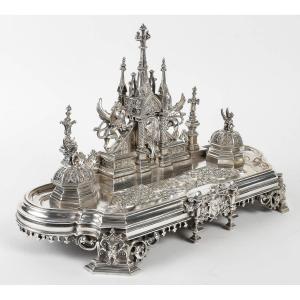

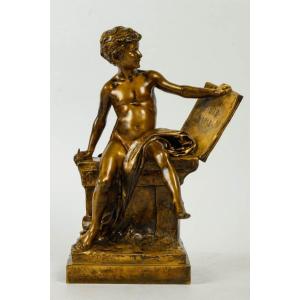
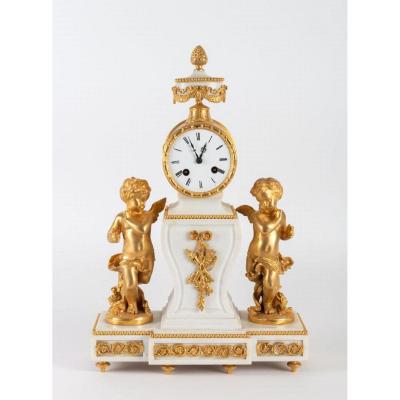

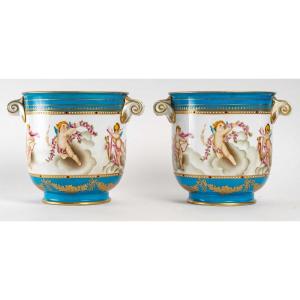
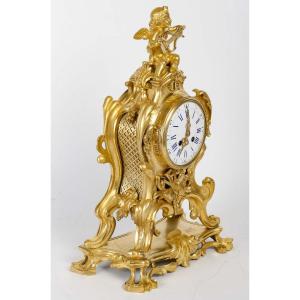


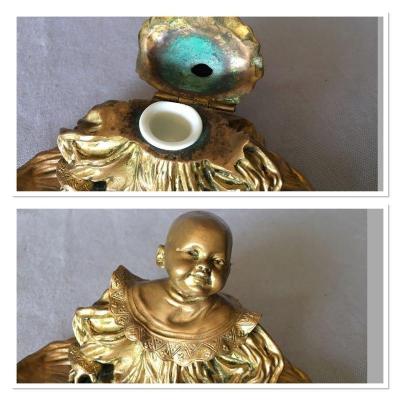
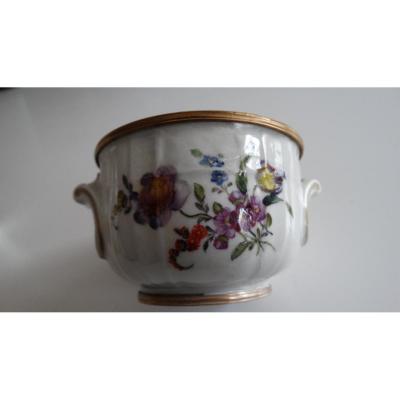
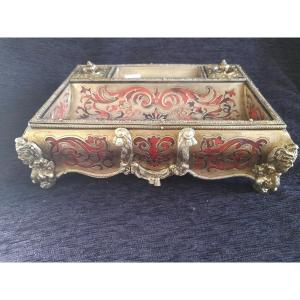





 Le Magazine
Le Magazine Rivista Artiquariato
Rivista Artiquariato TRÉSORS magazine
TRÉSORS magazine

